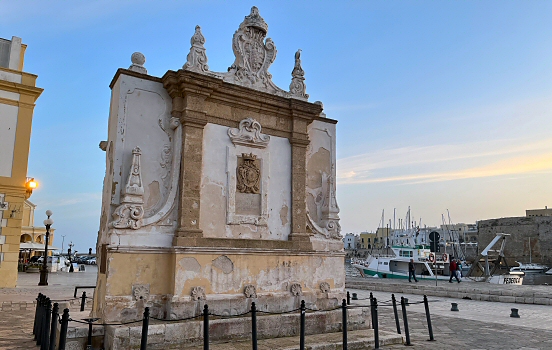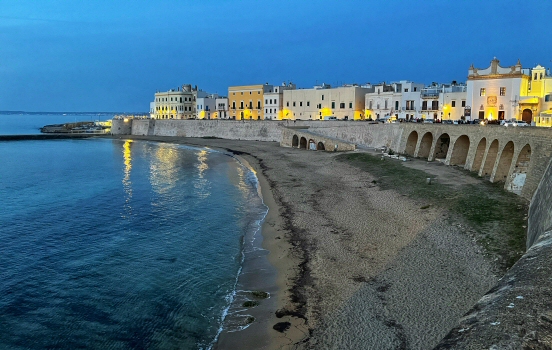As with many cities around the Mediterranean Sea, Gallipoli has a checkered past with influences from a multitude of invading forces.
The old town of Gallipoli is located on an island, facing the Ionian Sea. At the edge of a 16th century bridge, linking the island to the mainland, is Fontana Greca. This Greek fountain is said to be the oldest in Italy. As I study the rather suggestive figures carved in stone on the large fountain, I think back on the past.
 Fontana Greca.
Fontana Greca.
Gallipoli used to be a city of Greater Greece, but in 265 BC it sided with Pyrrhus and Taranto against ancient Rome, which usually were a quick route to destruction. After the defeat it became a Roman colony.
Over a millennia later, it was sacked by Vandals and Goths, before being rebuilt by the Byzantines. I walk across the bridge, passing the massive walls of the large Angevine-Aragonese Castle, built in the 13th century by the Byzantines.
 Angevine-Aragonese Castle – old meets new.
Angevine-Aragonese Castle – old meets new.
Next wave came from the Normans in the 11th century, and during the following decades there were attacks from the Holy Roman Empire and the Venetians. The Spaniards appeared and renewed the massive walls. Then there was finally a glimpse of peace, allowing the port to be constructed.
 Spiaggia della Purità.
Spiaggia della Purità.
After crossing the island, I walk along the wall on the western side. Spiaggia della Purità (Beach of purity) is beautiful as the dusk settles over the Ionian Sea. People are chatting and eating along the street, making it feel like any seaside town. It seems the locals of Gallipoli finally got some rest after all.

Comments
No comments yet.
Leave a reply